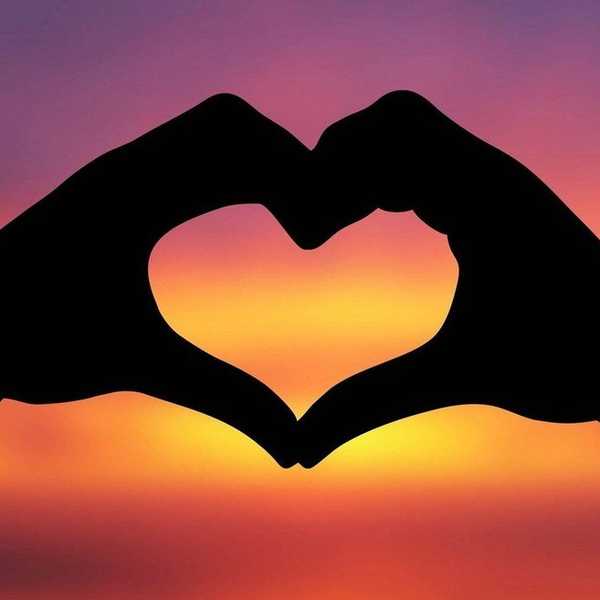These last few months have not been kind to Leslie Jones. Although the Saturday Night Live actress had a starring role in the fourth installment of Ghostbusters, her box office success was overshadowed by an onslaught of racist and sexist attacks on Jones’ Twitter feed, causing her to temporarily remove herself from Twitter to escape the harassment. She rose above the hatred and used her comedic talents to support Team USA in Rio during the 2016 Olympics, but found the hatred was waiting for her to return home. On Wednesday, her personal account JustLeslie.com was hacked and plastered with more racist and sexist imagery. Nude photos and other personal information was stolen from her iCloud account and shared with the world. Memes and video tributes of Harambe, the gorilla who was killed at a Cincinnati Zoo earlier in the summer, were posted to her site as well, echoing racist remarks that bombarded the actress earlier in July after Milo Yiannopoulos wrote a scathing review of the female lead Ghostbusters movie. Although white actresses have found themselves the victims of nude photo leaks and computer hacks in the past, these attacks on Leslie Jones are unique as they force a spotlight on how the misogyny and hatred that women of color face is much more nuanced than the general misogyny white women are faced with in a patriarchal society. These attacks show that our society still has a long way to go on resolving both issues of race and gender equality, and if feminists are to have any hope in dismantling such hatred in our culture the intersectional movement must shine a light on the issue of misogynoir.
Misogynoir Is Different From Everyday Misogyny
In recent history feminism has pushed the belief that misogyny, or the hatred of women, is universal and that no matter one’s race, class or creed all women experience this cultural disdain of the feminine in a similar manner. This not true, however and is in fact an oversimplification of a complex issue. Although all women benefit from the destruction of a patriarchal value system, women of color, especially African-American women, have found that they not only experience basic sexism but that these experiences are compounded by racial hierarchies within our society. In 2010, gay black feminist scholar Moya Baile named this phenomenon “misogynoir” in order to discuss the intricate misogyny that is so deeply tied to race. In the United States, misogynoir stems from racial bias that was created with slavery, allowing for one group to be held in higher or lower regard based on the color of their skin. After slavery was abolished, white supremacy continued to create a racial caste system with the implementation of Jim Crow laws, allowing for the continuation of the dehumanization of African-Americans in our society. Couple this with patriarchal standards that dictate many norms in American culture, African-American women had twice as much prejudice to deal with compared to their white counterparts. Now, only 52 years after the Civil Rights Act of 1964 was passed, these ideas of white supremacy still lurk just below the surface in American culture, from workplace discrimination all the way to media representation of African-American women.
One example of misogynoir is that although 1 in 5 women will experience rape in their lifetime, statistics show that minority women in the United States experience violent crime at a much higher rate than white women. Even among other minorities, women within the African-American community often find they are victims of violent crime more frequently than other minority women. The Bureau of Justice has stated that 22.5 of every 1000 non-Latino African American women will experience violence in their lifetime compared to 16.2 of every 1000 Hispanic women that will experience violence against them. It is not only violence that African-American women experience differently, however. While white women on average make 78 cents for every white man’s dollar, African-American women’s pay averages to 64 cents to every white man’s dollar. Society often attributes this trend on the amount of higher education that white women hold compared to African-American women. According to the National Center for Education Statistics, however, black women have been earning bachelor's, master's and doctoral degrees at higher rates than their white counterparts since 2010 and this trend is expected to continue. Yet, even when the statistics show that white women have actually earned less education, white women still make up 43% of higher paying management compared to 35% of African American women in the same category ,in addition to white women being paid more in the long run. Studies found that if one’s name appears overtly African American, one is less likely to receive a job offer even if their credentials are identical to an applicant with a white sounding name. Women are more likely to be discriminated against in hiring and promotions which is believed to stem from sex biases that paint women as emotional and often unreliable due to their ability to become pregnant and take maternity leave. However, African American women, especially women who are easily identifiable as black, are overall much more likely to be discriminated against in the workplace due to the joint biases of race and gender that still thrive in a majority white patriarchal society.
Media Bias, Misogynoir and the Attack on Leslie Jones
Although America is an independent culture that values individualism and free will, this does not preclude Americans from being influenced by what they view. Mass media is often a reflection of overall culture, or an idealistic version of a culture , and our culture is what dictates what is and what is not acceptable and normal. It has the ability to influence the way someone feels about certain issues and can normalize what was once hard to imagine. It can change one’s mind for the better or plant fears for the worst. Evidence of this can be found in how Harriet Beecher Stowe’s Uncle Tom’s Cabin is credited with influencing how many white northerners viewed slavery during the Civil War Era as many of the northerners who had not been personally touched by slavery came to realize its depravity after reading the story. Birth of a Nation, a movie that is often deemed one of the most racist films in history, caused a surge in Klan membership and was thought to have influenced post-Civil War fears of free slaves in southern states, which eventually led to the creation of Jim Crow laws. Mass media has a much broader reach now than it did in the Civil War Era, and the reach has brought with it an influence that is powerful.
Studies show that the average American spends an average of 11 hours and 52 minutes a day watching some form of media, meaning the subtle influences that shape our understanding of the world has much more time with the average person. This is time spent with advertisements and shows that place importance on Eurocentric beauty standards and quite often depict women of color negatively, if at all. In a University of Southern California study, it was found that only 33.5 % of characters in media were female, even though women make up 50.4% of the American population, and that less than 28.3% of characters with dialogue were from non-white racial or ethnic backgrounds, even though minority groups make up more than 40% of the overall population. Studies have also shown that when African American women are featured in broadcasts, they are often depicted in stereotypical and negative fashions, allowing for the overall belief in tropes such as “the angry black woman”, the “baby mama”, and other hypersexualized stereotypes to be accepted by the masses. This contributes heavily to the continuation of misogynoir in American society. Media also contributes by projecting Eurocentric beauty standards as the determination of beauty in America. Due to the patriarchal value system in our society, a woman’s worth is often determined by her ability to carry out certain gender roles, one being the ability to be beautiful. These standards of beauty are set by what is deemed by the media as beautiful. When the majority of “beautiful women” on television and other forms of media are depicted as white or light skinned, soft haired and very thin, this excludes women like Leslie Jones or other African American women like Serena Williams or Michelle Obama from being viewed as beautiful, therefore they unable to achieve a “valued” status in our society. The only way for a black woman to be considered "beautiful" with these standards, is to appear very close to white. When women like Leslie Jones, who do not fit these standards, dare to make themselves seen in American society, these women are often attacked to discourage other women from challenging the status quo. Ironically, certain features and styles that are prominent within the African American community are coveted by white society such as larger lips, larger butts and curly hairstyles. However, these features are only deemed “beautiful” or valuable when they appear on a white body, showing that America values what many women of color have, just not women of color themselves. This inability to value a person allows for that person's dehumanization to be normalized, eventually creating situations such as the sexist and racist attacks on Leslie Jones that happened earlier in the week.
If society ever hopes to avoid other attacks like the ones Leslie Jones has endured, society must look inward and face the problems that have been lurking just below the surface for decades. Although it was a group of trolls who brought these problems to Ms. Jones, our society must also be held accountable for contributing to a way of life that for too long has devalued black and brown women. We must think critically about how the media influences us and we must demand inclusiveness in our media so that women of color can be depicted as people, not stereotypes, which will eventually change our society’s way of thinking of women of color. Subconscious bias can slowly be changed so that African American women will be given equal opportunities and be just as valued as white women in America. This value will allow for issues such as violence against women of color to be challenged and create safer environments for women everywhere. Society must stop denying that both sexism and racism no longer exist and feminists must become intersectional to face this complex issue head on. It’s time to start valuing women of color in this country. Here’s to you, Leslie Jones. Feminists everywhere are fighting for you and standing with you. You are talented, beautiful and so valued. We love you!





















